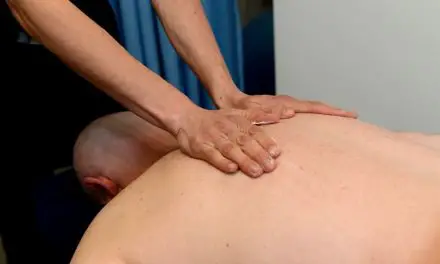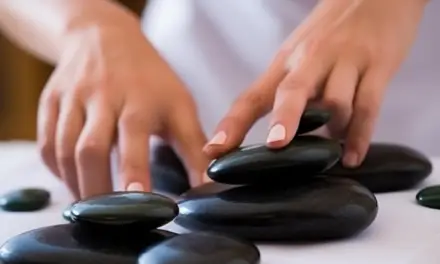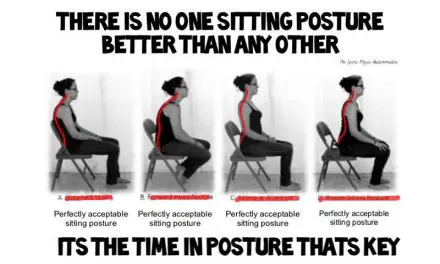If you could watch yourself getting a massage and you have back pain, would that be more effective in reducing pain than watching something else or simply close your eyes like most people? Four researchers from four different universities in Germany decided to find out.
Nineteen subjects with low back pain participated in the study — five men and fourteen women in their late twenties to early sixties — and each had a total of six massages with a minimum of 48 hours between sessions. While the massage protocol is almost the same throughout the study, in each session, each subject had different visuals to watch while a massage therapist worked on them.
The first session was just a regular massage with no visual cues and was not reported in the analysis. The researchers stated that it “served to establish a therapeutic relationship.” The visuals include: 1) an image of a book against a white background; 2) a photo of the subject’s own back with the therapist’s hands on the back right before the massage started; 3) a video of someone else getting a back massage from a bird’s-eye view where the therapist begins on the side of the back opposite from what is shown in the video; 4) a real-time video of the subject receiving a massage; 5) nothing — the subject had his or her eyes closed.
The order in which the visuals were given was randomized, and the subjects were blinded to the study’s hypothesis but not the therapist. Each massage session lasted 20 minutes, starting with one minute of the typical Swedish full-back effleurage. Then the therapist performed nine minutes on the left side of the back — then the right side — with a combination of effleurage, petrissage, and friction. The intensity and duration of the work depends on how sensitive the subject was. Most of the session focused on the lower back, which ended with the same full-back effleurage.
Surprisingly, the visual that reduced the most pain intensity was the real-time video of the subjects, followed by “eyes closed.” The latter three did not have much difference. For reduction of pain unpleasantness, “real-time” and “eyes closed” did not have much difference, and the same can be said about the other three visuals.
This study is based on previous investigations by pain researchers who were interested in how vision can increase or decrease the perception of pain. Dr. Lormier Moseley from the University of South Australia suggested that changing one’s body image can change pain perception. (2,3) For example, patients with chronic pain in their hand feel even more pain when the image of their painful hand is magnified. Conversely, minimizing the size of their hand reduces their pain sensation. (3) Two studies also find that subjects who were induced with a mild painful stimuli (laser, electricity) had reduced pain sensation when they observe their own body after the induction. (4, 5)
Is this study’s findings applicable to a massage setting? Maybe. No one really knows how practical it is for clients or patients to have their eyes open and watch themselves on an Tablet getting a massage. Given the small sample in the study, we should be careful about extrapolating the data and make (sweeping) claims about what visual analgesia could do for back pain. It may be worth further investigation, but it is more likely that this study is a basic science study rather than a translational study. If you liked this article your may also like this one that analyzes whether or not it’s safe to pop your back.
References
1. Löffler A, Trojan J, Zieglgänsberger W, Diers M. Visually induced analgesia during massage treatment in chronic back pain patients. Eur J Pain. 2017 Jun 22. doi: 10.1002/ejp.1066.
2. Moseley GL. I can’t find it! Distorted body image and tactile dysfunction in patients with chronic back pain. Pain. 2008 Nov 15;140(1):239-43. doi: 10.1016/j.pain.2008.08.001.
3. Moseley GL, Parsons TJ, Spence C. Visual distortion of a limb modulates the pain and swelling evoked by movement. Curr Biol. 2008 Nov 25;18(22):R1047-8. doi: 10.1016/j.cub.2008.09.031.
4. Longo MR, Betti V, Aglioti SM, Haggard P. Visually induced analgesia: seeing the body reduces pain. J Neurosci. 2009 Sep 30;29(39):12125-30. doi: 10.1523/JNEUROSCI.3072-09.2009.
5. Cardini F1, Longo MR, Haggard P. Vision of the body modulates somatosensory intracortical inhibition. Cereb Cortex. 2011 Sep;21(9):2014-22. doi: 10.1093/cercor/bhq267.
A native of San Diego for nearly 40 years, Nick Ng is an editor of Massage & Fitness Magazine, an online publication for manual therapists and the public who want to explore the science behind touch, pain, and exercise, and how to apply that in their hands-on practice or daily lives.
An alumni from San Diego State University with a B.A. in Graphic Communications, Nick also completed his massage therapy training at International Professional School of Bodywork in San Diego in 2014.
When he is not writing or reading, you would likely find him weightlifting at the gym, salsa dancing, or exploring new areas to walk and eat around Southern California.





